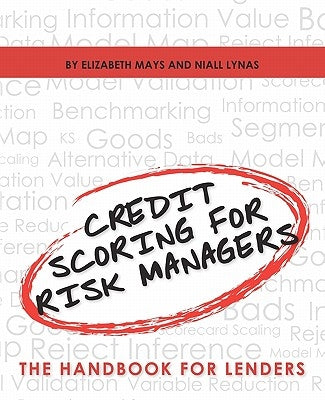Description
This is the second edition of Credit Scoring For Risk Managers: The Handbook for Lenders. Like the first edition, it was written for bankers and other consumer lenders who need a clear understanding of how to use credit scoring effectively throughout the loan life cycle. In today's financial system, scoring is used by virtually all lenders for all types of consumer lending assets, making it vitally important that risk managers understand how to manage and monitor scores and how to set policies for their use. This edition is substantially different from the first edition published in 2004. The world's economies have been through a major financial crisis and severe recession and some have questioned the role and value of models and scores used by lenders in the years leading up to the U.S. housing collapse and economic downturn. We have devoted a significant portion of the book to topics relevant to ensuring scorecards are properly managed through volatile environments and controlling the risk of using credit scores for decision-making. Ten of the book's sixteen chapters are new. Many focus on scorecard management practices and on controlling model risk. Score management refers to all the activities model managers and users engage in after the scorecard is developed. These include setting proper lending policies to use in conjunction with the score, periodic back-testing and validation, and remediation of any issues that may arise related to scorecard performance. Chapter 4 takes the reader step by step through a scorecard development project and discusses best practices for managing and documenting scorecard projects to increase the transparency of the performance, assumptions and limitations of scoring models. The last three chapters are devoted to the important topic of score model governance. Chapter 14 describes how to design a model governance framework to ensure credit scoring models are properly developed, used and validated on an on-going basis. Chapter 15 is focused on model monitoring and back-testing and describes a set of reports lenders should create and review to ensure their scorecards are performing well. Independent review of risk models by a third-party model expert is an important part of sound model governance. In Chapter 16 we describe how to carry out a thorough independent model review. Other chapters focus on new material not covered in the previous edition including types of data that are used as predictive information in scores (Chapter 3), fair lending analysis of scorecards and the creation of adverse action reasons (Chapter 11), the use of scores as components of other models (Chapter 10), common scoring mistakes to avoid (Chapter 12) and the important topic of reject inference (Chapter 9).
Author: Niall Lynas, Elizabeth Mays
Publisher: Createspace Independent Publishing Platform
Published: 02/03/2011
Pages: 266
Binding Type: Paperback
Weight: 1.02lbs
Size: 9.25h x 7.52w x 0.56d
ISBN13: 9781450578967
ISBN10: 1450578969
BISAC Categories:
- Business & Economics | Banks & Banking
- Business & Economics | Marketing | General
Author: Niall Lynas, Elizabeth Mays
Publisher: Createspace Independent Publishing Platform
Published: 02/03/2011
Pages: 266
Binding Type: Paperback
Weight: 1.02lbs
Size: 9.25h x 7.52w x 0.56d
ISBN13: 9781450578967
ISBN10: 1450578969
BISAC Categories:
- Business & Economics | Banks & Banking
- Business & Economics | Marketing | General
About the Author
Mays and Lynas are credit scoring experts with a combined 40 years of experience building, validating, and performing independent review on credit scoring models.
This title is not returnable

